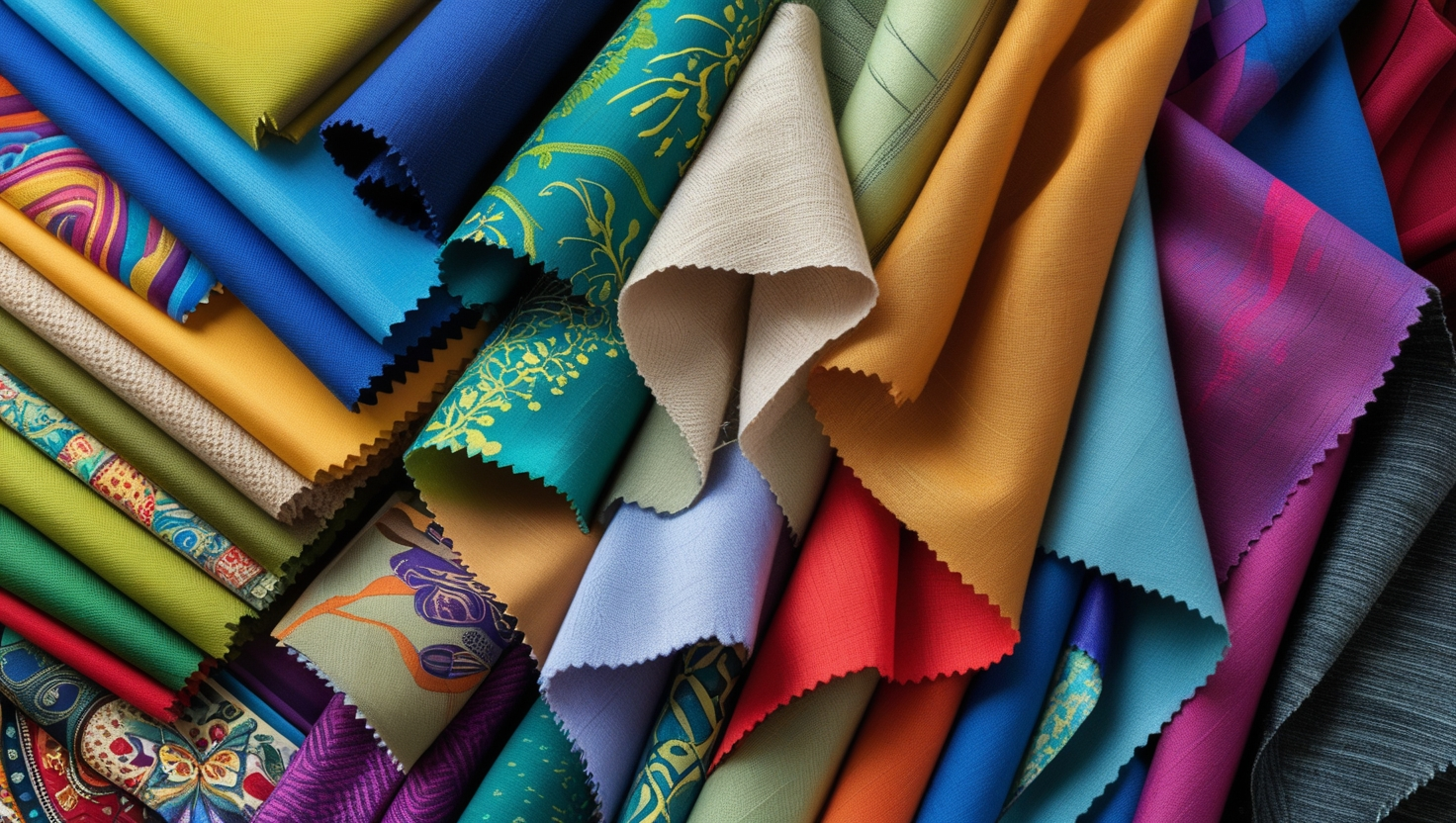How to Clean Every Kind of Fabric: Practical Tips for Fabric Care
Have you ever looked at the tag of your favorite shirt and felt puzzled by the words “nylon” or “rayon”? You’re not alone! Many of us wear different fabrics daily but have little idea of what they are or how to take care of them properly.
Understanding fabric types is essential, especially when it comes to cleaning and maintaining our clothes. After all, a beautiful dress can lose its charm if it shrinks in the wash or fades after a few cycles. Knowing How to Clean Every Kind of Fabric can help keep your wardrobe looking fresh and vibrant for years to come.
Did you know that some fabrics need special treatment? For instance, while cotton is generally easy to wash, delicate silk requires a gentler touch. Understanding these differences can save you time, money, and the heartbreak of ruined garments.
In this guide, you’ll find practical tips how to clean different fabrics, from everyday essentials to luxurious materials. So whether you’re handling wool, acrylic, or that stunning linen dress, you’ll be equipped with all the know-how to keep them in top shape!
Why Fabric Care is Important
Before we jump into the different types of fabrics, let’s talk about why it’s essential to care for them. Imagine you have a favorite shirt or a cozy blanket. If you don’t wash them properly, they can get all wrinkled, faded, or even shrink down to a size too small for you! Taking a little time to care for your fabrics ensures that they look good and feel nice.
Moreover, many fabrics are made from natural fibers like cotton and wool, which can be sensitive to washing in hot water or drying in the dryer. Knowing how to wash them helps protect our planet too, as it keeps unnecessary waste out of landfills. So, let’s make sure your fabrics stay in tip-top shape!
Permanent marker removal hacks that actually work
Understanding Fabric Types & Care Tips

1. Cotton: Your Everyday Hero
Cotton is one of the most common fabrics out there. It’s soft, comfortable, and perfect for everything from t-shirts to bed sheets. Because it’s made from natural fibers, it can shrink if not taken care of properly, just like when you wash your favorite toy!
If your cotton clothes get wrinkled after washing, you can use an iron to smooth them out. Just be careful not to over-dry cotton in the dryer, as it can shrink a little. Nobody wants their favorite shirt to get too small!
How to Wash Cotton
When washing cotton, it’s best to do a little prep work first. Start by running a pre-wash cycle. This means you wash the fabric before you make something out of it. It helps to “set” the fabric and prevent it from shrinking later.
To wash your cotton fabrics, use warm water for white cotton, so it stays bright, and cold water for colored cotton to keep those lovely hues intact. And don’t forget – cotton loves to wrinkle, so it’s great to have an iron on hand. Just set it to high heat, and voila! Smooth cotton in no time.
Denim, which is often made from cotton or a mix of cotton and other fibers. Denim is tough because of its special twill weave. Many people think you need to wash your jeans every time you wear them, but that’s not true—jeans can be worn a few times before they need washing. Most denim is okay to wash in cold water, which helps it last longer and keeps its color.
So remember, whether it’s cotton or denim, taking care of your clothes properly helps them stay nice and comfy for a long time!
2. Linen: The Timeless Classic
Linen comes from the flax plant, and it’s been around for ages! It’s strong and incredibly breathy, making it a fantastic choice for summer clothes. Think of it as the wise grandparent of fabrics!
One of the great things about linen is that it keeps you cool on hot days. It’s perfect for summer! But there’s a little problem: linen wrinkles pretty easily, which means it can look crinkly after washing.
To help make your linen clothes look nice and smooth again, you can use an iron. Just turn the garment inside out first and set the iron to a hot temperature with steam. This will help get rid of those wrinkles and make your linen look fresh and crisp again!
How to Care for Linen
Linen likes a little TLC too! When washing linen, use cool water to keep its natural beauty intact. It can handle a medium dryer setting but air drying is the best way to preserve its quality. Just lay it flat, and let it dry in a sunny spot – it’ll soak up those good vibes!
3. Silk: The Fancy Friend
Silk is one of the most luxurious fabrics in the world, and it comes from the cocoons of silkworms. That’s why it feels so soft and shiny! Many people love silk because it looks beautiful and feels great against the skin. However, if you see a label that says “dry clean only,” it’s usually best to follow that advice. But if you’re feeling brave, it’s possible to wash it at home!
How to Wash Silk
When washing silk, the biggest problem is that it can fade in color. So, before you wash your silk garment, it’s a good idea to test a small area first. Just take a damp white washcloth and gently pat it on a spot that’s not very noticeable. This will help you see if the color stays bright.
If the color looks good, you can wash silk carefully using a mild shampoo or special silk detergent. It doesn’t take long to clean silk since it releases dirt quickly. After washing, you can roll the silk in a dry towel to soak up extra moisture, and then hang it to air dry. But remember, if you have dark or brightly colored silk items, it might be better to take them to a professional cleaner to keep them looking their best!
After washing, don’t wring it out like a towel; just gently squeeze out the water. Lay it flat on a cotton towel to dry—this will keep it looking gorgeous! And remember, no ironing unless you’re super careful. Heat can ruin this fancy fabric.
4. Wool: The Cozy Companion
Wool is warm and snuggly, perfect for chilly days! It comes from sheep and helps keep you toasty. It’s also a bit sensitive, just like the gentle side of your favorite stuffed animal.
How to Wash Wool
Wool likes a gentle touch. If you can, handwash it in cool water. If you must use a machine, select the wool setting to keep it safe. Just be sure to use a wool-friendly detergent to avoid any unwanted surprises!
When it comes to drying, lay your wool items flat to keep their shape. Never put wool in the dryer; that’s a recipe for shrinkage, and nobody wants that!
5. Cashmere: The Ultra-Soft Luxe
Cashmere is one of the softest and coziest fabrics used to make scarves and sweaters. It comes from the silky soft undercoat of cashmere goats. The reason cashmere items can be so expensive is that it takes a lot of work to collect the hair from the goats—about four goats are needed to make just one sweater!
Many people love cashmere because it feels luxurious, but they often worry about washing it. Some choose to always send their cashmere to the dry cleaners, thinking it’s too tricky to clean at home. However, taking care of cashmere isn’t as hard as it seems!
How to Care for Cashmere
If you want to wash your cashmere items yourself, it’s important to treat them gently. When washing cashmere, stick to cold water and a delicate detergent. Throwing it in the washing machine isn’t the best idea. Instead, treat it like your favorite toy, and handwash it gently. After washing, lay it flat to dry, just like with wool, to help it keep its cozy shape.
6. Leather and Suede: The Tough Yet Elegant Fabrics
Leather and suede are special fabrics made from the hides of animals, like cows and sheep. Unlike other fabrics, they don’t get dirty as easily, but they still need some care to stay looking good. Because they are made from animal skin, you can’t wash them like regular clothes!
How to Care for Leather and Suede
For leather, keeping it clean is pretty simple. You can use a soft brush or a clean cloth to gently remove any dust. If there’s a tougher stain, you can use a special leather cleaning solution. Just remember to read the label to know if it’s for treated or untreated leather, and spot treat the stain carefully.
Suede is a bit trickier to clean than leather. Even water can harm this soft fabric! To maintain suede, it’s smart to get a suede brush to wipe away dirt and dust regularly. If you spill something on your suede item, act quickly! Blot the stain with a clean cloth or paper towel without pressing too hard, or it might make the stain worse by pushing it deeper into the fabric.
Since cleaning leather and suede can be challenging and risky, it’s often best to take your leather and suede items to a professional cleaner. They know exactly how to take care of these delicate fabrics, so you can keep enjoying your favorite jackets and shoes without worry!
7. Synthetic Fabrics: Versatile but Careful
Synthetic fabrics like polyester/Spandex and nylon are made from artificial fibers. They are really popular in clothing because they are inexpensive to make and can be used for many different styles. You can find polyester in everything from t-shirts to jackets, making it a favorite choice for many people.
Tips to Care for Synthetic Fabrics
Here are some helpful tips to reduce microplastic shedding that occurs when you wash clothes made from synthetic fabrics like polyester.
First, try washing your clothes in cold water. Hot water can weaken the fibers, which makes them release more microplastics into the water. Plus, washing in cold water uses less energy, which is better for the environment!
Another great tip is to wash your clothes less often. By spot cleaning and letting your clothes air out, you can wear them longer between washes. This means fewer microplastics end up in the ocean. Your clothes will stay fresh, and you’ll help the planet at the same time!
You can also adjust your washing machine settings. When you reduce the spin cycle speed, it creates less friction in the fabric, which can help prevent shedding. The slower spin means your clothes can last longer and release fewer microplastics.
Finally, consider using special filters or laundry bags designed to catch those tiny microplastics when you wash. There are many products available that can help trap these bits, keeping them from getting into the water. These tips are also helpful if you’re pre-washing synthetic fabrics before using them in a project, so you can care for your clothes and the environment at the same time!
8. Semi-Synthetic Cellulose Fabrics: A Blend of Nature and Science
Semi-synthetic fabrics are special types of materials are made from processed plant fibers. Semi-synthetic fabrics like Rayon/lyocell, can shrink and lose their color when washed.
Rayon/Viscose
Viscose is a special type of fabric made from wood pulp, which is the same material used to make paper. It’s a kind of rayon, and cleaning it can be a bit tricky. Sometimes, viscose is mixed with other types of fibers, making it more difficult to care for.
One important thing to know is that viscose can shrink a lot when washed, and its colors can fade quickly. If you want to clean clothes made from viscose, you usually have two choices: you can take them to a dry cleaner, or you can wash them carefully by hand in cold water.
When you wash viscose by hand, make sure to let it air dry instead of using a dryer. While it’s still wet, smooth out the fabric to help prevent wrinkles. It can be really hard to get rid of wrinkles in viscose later on! By following these tips, your viscose clothes can stay looking their best!
Check the Label!

When you have a new piece of clothing, the first thing you should do is to check the label. The label is like a guide that tells you how to take care of your clothes. It has special symbols that explain the best washing and drying methods to keep your clothes looking great.
Following the care instructions on the label is really important. For example, some clothes need to be washed in cold water, while others can go in the dryer. If you don’t follow these rules, your clothes might shrink, fade, or get damaged.
By taking a few moments to read the label, you can make sure your clothes last a long time. When your clothes are well cared for, they will look nicer and feel comfortable to wear.
Final Thoughts On – How to Clean Every Kind of Fabric
Now that you’ve learned how to care for your fabrics, you can keep your wardrobe and home looking fabulous. Remember that just like a little love goes a long way in friendships, a little extra TLC for your fabrics can make all the difference. Whether it’s cotton, silk, wool, or something in between, each fabric has its own personality and needs.
Next time you pick out your clothes or start a new project, think about how to keep them happy and healthy. With these tips, you can be the fabric-care guru among your friends, making sure everything you own stays beautiful and lasting for ages!
FAQs
Can I mix different fabric types in the same wash?
It’s best to wash different fabric types separately. For example, keep delicate fabrics like silk and wool away from heavier fabrics like cotton to avoid damage.
How often should I wash my clothes?
It depends! You don’t need to wash clothes after every wear unless they’re visibly dirty. Spot clean when you can, and wash them when needed to save energy and water.
What should I do if my fabric shrinks?
If your fabric shrinks, you may be able to gently stretch it back into shape while it’s damp. Let it dry flat to help it maintain its new shape. For some fabrics, this might not be possible.
How can I prevent my colors from fading?
To minimize fading, always wash your fabrics in cold water and turn them inside out before putting them in the wash. Avoid direct sunlight while drying to help maintain their color longer.
Is there a special detergent for different types of fabric?
Yes! Look for detergents specifically designed for delicate or specialty fabrics like silk, wool, or cashmere. They are more gentle on the fibers and help keep them looking new.








One Comment